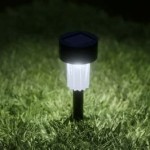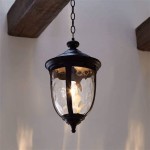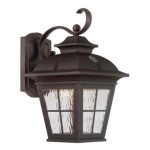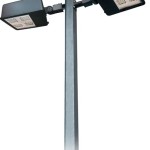Portfolio Outdoor Lighting Transformer Troubleshooting
Outdoor lighting transformers are essential components of any landscape lighting system, providing the necessary voltage conversion for low-voltage lighting fixtures. When these transformers malfunction, it can lead to dim or flickering lights, complete outages, and even safety hazards. Troubleshooting these problems can seem daunting, but with a systematic approach and an understanding of the basics, homeowners and electricians can effectively diagnose and resolve issues.
Understanding the Basics of Outdoor Lighting Transformers
Outdoor lighting transformers typically convert standard 120-volt household electricity to a lower voltage, usually 12 volts, for use with low-voltage landscape lighting fixtures. This voltage reduction is crucial for safety and energy efficiency, as it limits the risk of electric shock and reduces energy consumption. Transformers consist of a primary coil that receives power from the main electrical source and a secondary coil that outputs the lower voltage to the lighting fixtures.
These transformers are typically located in a weatherproof enclosure, often near the power source or the main distribution point. The enclosure protects the transformer from the elements and provides a safe and accessible location for maintenance and troubleshooting.
Common Transformer Problems and Troubleshooting Tips
Troubleshooting a faulty outdoor lighting transformer involves a series of steps to identify the root cause of the problem. Here are some common issues and how to address them:
1. Power Supply Issues
The first step in troubleshooting is to check the power supply to the transformer. This involves verifying that the circuit breaker controlling the transformer is switched on and that there is no power outage affecting the area. Inspect the wiring connecting the transformer to the main power source, looking for any loose connections, frayed wires, or signs of damage. Ensure the connections are secure and the wiring is properly insulated.
If the power supply appears to be working correctly, but the transformer is still not receiving power, the problem may lie within the transformer itself. A faulty internal component or a blown fuse can prevent the transformer from functioning.
2. Transformer Overheating
Overheating is a common issue that can cause transformer failure. This can be due to excessive load on the transformer, meaning that it's trying to power more lights than it can handle. It can also be caused by poor ventilation or a build-up of debris within the transformer's enclosure. To check for overheating, feel the transformer's housing. If it's significantly hot to the touch, it's a sign of a problem.
If the transformer is overheating, reduce the load by temporarily disconnecting some of the lights. This can help to cool down the transformer and prevent further damage. Additionally, ensure proper ventilation for the transformer by clearing any obstructions around the enclosure.
3. Internal Transformer Faults
Internal faults within the transformer, such as damaged windings or blown fuses, can lead to complete failure. If the power supply is working correctly, the transformer is not overheating, and the lights are still not working, suspect an internal fault. In this case, it's recommended to replace the transformer with a new one.
4. Circuit Breaker Protection
Outdoor lighting transformers are often protected by a dedicated circuit breaker. If the transformer is malfunctioning, the circuit breaker may trip to prevent further damage to the system. Check the circuit breaker panel to see if the breaker for the transformer is tripped. If it is, reset the breaker. If it trips immediately, the problem is likely with the transformer or the wiring connected to it.
5. Testing the Transformer Output
To test the transformer output, use a multimeter to measure the voltage at the transformer's secondary output terminals. The voltage should be close to the rated output voltage for the transformer (usually 12 volts). If the voltage is significantly lower or fluctuating, the transformer is likely faulty and needs to be replaced.
6. Inspecting the Wiring
The wiring connecting the transformer to the lighting fixtures can also cause problems. Inspect all wiring for signs of damage, loose connections, or corrosion. Ensure that the wiring is properly insulated and that all connections are secure. If any wiring is damaged, replace it with new, correctly sized wire.
7. Replacing the Transformer
If all other troubleshooting steps have been exhausted and the problem persists, the transformer likely needs to be replaced. When selecting a new transformer, ensure it is compatible with the existing lighting system and has a suitable voltage rating. Install the new transformer in a suitable location, ensuring proper ventilation and access for maintenance.
By following these troubleshooting tips and understanding the basics of outdoor lighting transformers, homeowners and electricians can efficiently diagnose and resolve common problems. This can save time, money, and potential safety hazards associated with malfunctioning transformers.

Portfolio 600 Watt Transformer Manual Falling Water Designs

Portfolio 12 Volt Multi Tap Landscape Lighting Transformer Instructions Modern Las Vegas

Troubleshooting Portfolio 00689 Manual Page 4 Manualslib

Outdoor Landscape Light Troubleshooting Guide Abulous Lighting

Landscape Lighting Transformer Repair How To Add A Dusk Dawn Sensor

Landscape Lights Not Working Solutions To 7 Common Problems

Portfolio 120 Watt 12 Volt Multi Tap Landscape Lighting Transformer With Digital Timer And Dusk To Dawn Sensor At Com

Hampton Bay Low Voltage 200 Watt Landscape Transformer Single Ng Sl 12a The Home Depot

Portfolio 12 Volt Multi Tap Landscape Lighting Transformer Instructions Modern Las Vegas

Portfolio 8201080378 12 Volt Multi Tap Landscape Lighting Transformer Installation Manual Manualzz
Related Posts







